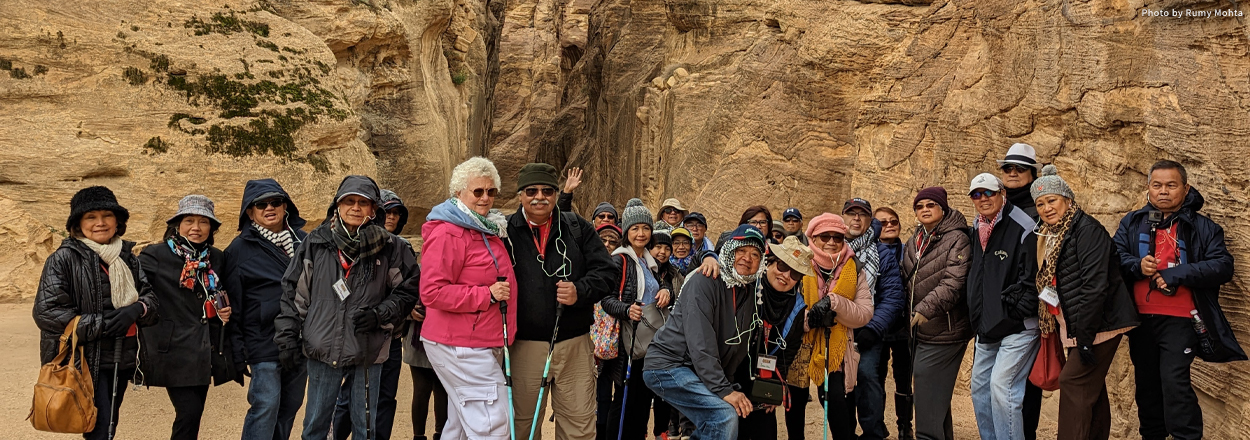Diversity in the workplace has long been a goal of many organizations, and for good reason. We know that diverse teams have a competitive advantage that leads to increased creativity, a drive in innovation and can help expand the brand’s reach. This thinking is not just for large companies, either — the benefits trickle down to teams of any size across all industries.
A team of advisors with similar backgrounds who all think the same way is not going to help your brand grow. But, adding some new voices and perspectives into the mix can help spur innovation, which leads to increased success. Race, culture, age, gender, sexual identity and disabilities are all factors to consider when looking to expand your business.
As travelers gear up to get back to some of their favorite destinations or seek out new adventures, and advisors begin to head back to the office, now is the perfect time to consider how you can improve your own employment practices to hire and champion a diverse team. Aside from being the right thing to do, numerous studies have shown that equity, diversity and inclusion in the workforce improve economic outcomes across the board, not just for sexual and gender minorities. Here’s how you can get started today.
Understanding the Intention
Equity, diversity and inclusion are three buzzwords that are often thrown around, but truly understanding them and their meanings is essential in today’s business landscape. Diversity is the presence of difference but doesn’t describe anything about the quality of diverse peoples’ experiences. Inclusion is when individual people of different social identities can have a sense of belonging within a larger group context. Equity is found in the actions and the systemic culture that ensures access to everything the group has to offer, despite the variety of different barriers faced by a diverse team. For any of these efforts to be effective, they must all be actively practiced.
Why Diversity Makes a Difference
Besides the obvious advantages of being known as a quality employer with a diverse workforce, the breadth of knowledge and experience brought to a team by empowered and diverse workers cannot be overlooked.
The safety and comfort of a destination is a prime example, especially when it comes to serving LGBTQIA+ clients. “No matter how hard members of historically represented groups try, they lack the lived experience to understand the perspective of potential LGBTQ+ clients,” says travel advisor Veronica Hanson, owner of Nomad Veronica. “Life happens in the nuances. It is generally easy enough to look up laws concerning LGBTQ+ rights in a foreign country, but that never paints the whole picture.”
Attracting Diverse Employees
The current job market is hot, which means that if you want to field a qualified, dedicated and diverse team of employees, you need to be ultra-competitive in your offerings.
You can do this by maximizing your EVP, or your employer value proposition. What is it that you offer to employees that they can’t get anywhere else? This is an area that can allow you to offer perks that appeal to workers outside of your own peer group. Professional development opportunities, child care stipends or in-office care, flexible time and family leave, and a robust health care benefits package that allows employees access to supportive, LGBTQIA-positive service providers can all be appealing.
More creative offerings are also appealing. These can include involvement with the nonprofit sector, from small things like offering employees time off to volunteer with a local organization like Lambda Legal or matching donations to charities like The Trevor Project, to bigger commitments like partnering with an immigrant and refugee reunification project.
“Employers should start showing applicants that their company culture is truly inclusive in their recruitment efforts,” says Corritta Lewis, a veteran HR technologist turned travel advisor and owner of It’s A Family Thing. “Take the time to reach out to LGBTQ+ organizations in disenfranchised areas to welcome potential employees who wouldn’t otherwise apply. Make the effort to seek out different trains of thought.”
Throughout the application process, it’s important that employers consider the barriers that applicants from different communities might face
- How much time does it take to apply for an open position?
- How many interviews are required before a decision is made?
- What kind of forms will you have applicants fill out, and which questions will you ask about their various identities?
- What identification, if any, will you ask of people, and how might this work if the name they use is not their legal name?
- Will interviews happen in person or are other options available?
- How accessible is your office to disabled applicants?
“It’s important to have an HR team that can understand the LGBTQ+ community and offer resources to actively help those employees,” says Lewis. “In doing so, you will foster a culture of fairness and support from the very beginning of the hiring process.”
The Support Doesn’t Stop When the New Hire Starts
Once you have a varied group of people, it’s important to facilitate an environment in which they truly feel included, and where their perspective and ideas are appreciated and supported. A survey from Harvard Business Review found what diverse employees have known for a long time: People who don’t experience bias underestimate the frequency and impact of biases that marginalized employees face in the workplace on a day-to-day basis. More than half of the diverse employees among the 16,000 people surveyed reported pervasive bias throughout their daily work experience.
Company culture remains one of the largest obstacles to attracting and retaining diverse employees, impacting their ability to feel included in the team and driving their experience of equity (or the lack thereof) in the workplace. It can also be a massive blind spot that thwarts even the best-laid plans for positive and effective action. If unconscious biases in the way your business operates are actively creating challenges for your most marginalized employees, your efforts to encourage their development will be worth next to nothing.
“I’ve always felt that members of minority communities end up having to do a lot of heavy lifting by educating majority groups around them,” says Hanson. “I think it’s up to the agency and advisors to get out and find information from a number of sources and build a knowledge base that doesn’t depend on asking the one new LGBTQ+ employee. A representative culture is one that elevates ideas, questions and expertise. It’s up to the leadership and coworkers to create that culture, and not the other way around.”
Originally appeared in the winter 2021 issue of The Compass Magazine.





comments